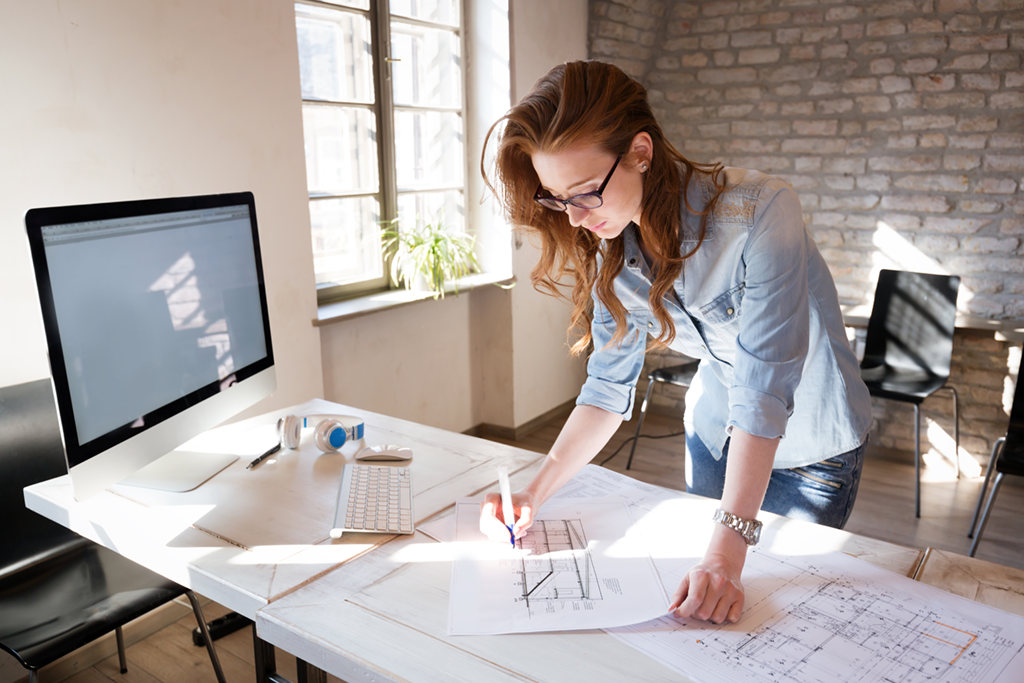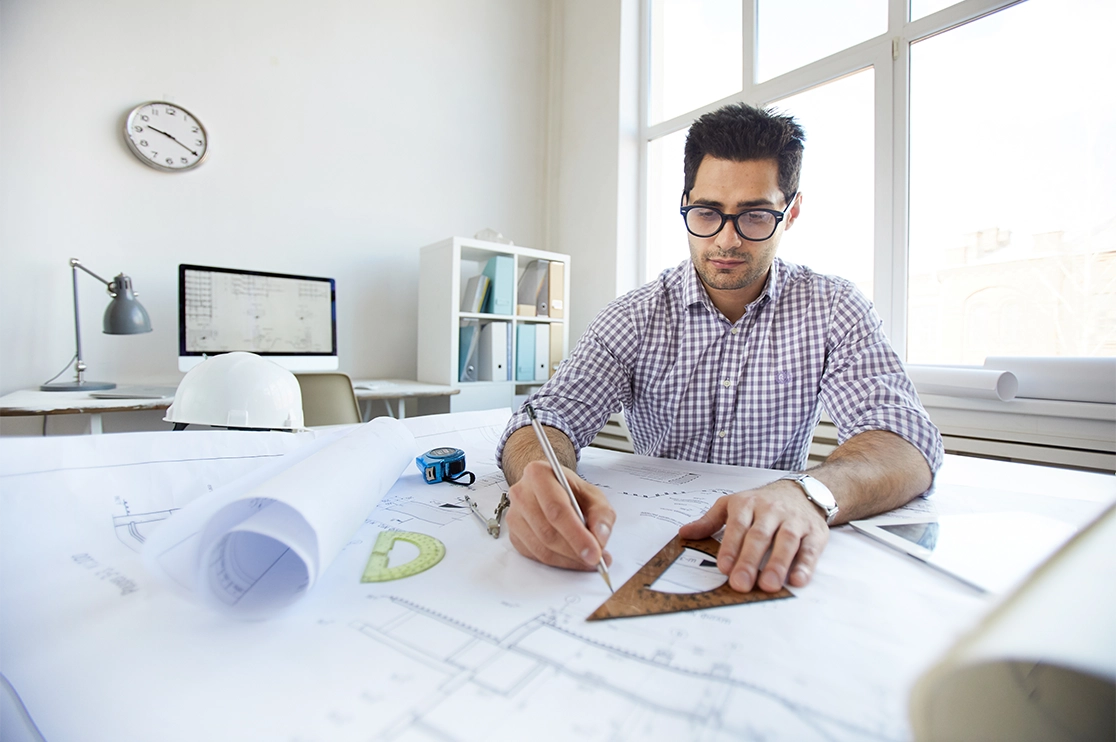Architect Guide to Green Building Materials
Architect Guide to Green Building Materials
Blog Article
The Function of Sustainability and Modern Technology in Modern Architect Practices
Sustainability and innovation are reshaping modern-day style in methods you may not anticipate. By accepting environment-friendly materials and wise developments, architects are not just producing buildings; they're crafting atmospheres that boost our high quality of life. This shift isn't nearly aesthetic appeals or performance; it's about developing a responsible method to our earth's future. What's driving this makeover, and how can these adjustments impact your community?
The Value of Lasting Style
Lasting design is important not simply for the environment but additionally for boosting our quality of life. When you embrace lasting layout, you're not simply lowering your carbon footprint; you're producing rooms that promote health and wellness and well-being. Envision living in a home that takes advantage of natural light, improves air quality, and reduces power expenses. You'll really feel more linked and comfy to nature.
Moreover, sustainable architecture frequently brings about stronger communities. When buildings are created with environment-friendly techniques, they can motivate others to follow match, fostering a culture of sustainability. You'll notice boosted building worths and a higher sense of satisfaction in your surroundings.
Lastly, by prioritizing sustainability, you're purchasing the future. You're ensuring that future generations delight in a healthier planet and vibrant neighborhoods. When you consider your next project, believe concerning how lasting architecture can raise your life and those around you.
Cutting-edge Products Changing Structure Practices
As you discover cutting-edge products in architecture, you'll find that biodegradable building and construction materials are reshaping exactly how we think concerning sustainability. Recycled material technologies are offering brand-new life to waste, while wise material innovations boost developing effectiveness. These developments not just advertise eco-friendliness however additionally press the borders of layout.
Naturally Degradable Building Materials
While typical building and construction materials typically contribute to environmental degradation, eco-friendly building and construction products are arising as a practical option that changes structure practices. You can explore alternatives like hempcrete, bamboo, and mycelium, which not just lower waste yet also promote sustainability. These products damage down naturally at the end of their lifecycle, minimizing garbage dump contributions. By incorporating eco-friendly choices into your designs, you're not just enhancing visual charm; you're additionally making a positive impact on the planet. Plus, they usually require much less power to create, additionally lowering your task's carbon impact. As you adapt to these ingenious products, you'll discover that they supply toughness and versatility, allowing you to produce structures that align with modern-day worths of sustainability and responsibility.
Recycled Web Content Advancements
In the last few years, ingenious materials with high recycled material have revolutionized building practices, using designers exciting new alternatives - Architect. You can currently integrate materials like recycled steel, which not just minimizes waste yet additionally flaunts outstanding stamina. Recycled glass is one more amazing option, giving aesthetic allure while decreasing environmental influence

Smart Material Technologies
Smart product innovations are improving the means you assume regarding building techniques, supplying dynamic remedies that adjust to transforming problems. These cutting-edge materials, such as self-healing concrete and thermochromic glass, improve building efficiency and sustainability. Envision frameworks that can get used to temperature level changes or fix themselves when harmed-- these innovations are no more simply ideas. By integrating wise products, you can create energy-efficient styles that react to their environment, reducing total energy intake. The capacity to adjust and monitor in real-time streamlines upkeep and lengthens the lifespan of buildings. As you accept these technologies, you're not simply introducing; you're adding to a much more lasting future in style, combining functionality with environmental responsibility.
The Assimilation of Smart Technologies in Style
As innovation progresses, incorporating smart services right into architectural design becomes vital for creating sustainable and efficient areas. You can integrate clever technologies like building administration systems, which maximize energy usage and improve resident comfort. Sensing units can keep track of ecological problems, readjusting illumination and temperature level instantly based on real-time information. This versatility not just boosts user experience however also lowers power intake.
Incorporating Web of Points (IoT) devices enables for smooth communication among various structure systems, allowing you to make data-driven choices that boost capability. Smart materials that react to environmental changes can better boost your design, offering dynamic remedies to ever-changing problems.
Energy Performance and Renewable Power Solutions
While numerous architects more info focus on looks, focusing on energy effectiveness and eco-friendly energy remedies is important for sustainable layout. You can start by incorporating passive solar design, which maximizes natural light and warm, decreasing reliance on man-made illumination and heating unit. Use high-performance insulation and energy-efficient home windows to reduce energy loss.
Do not ignore renewable resource systems-- set up solar panels or wind turbines to generate tidy power on-site. You can likewise take into consideration including geothermal heating and cooling systems for a more sustainable temperature level guideline.
By selecting energy-efficient appliances and lighting, you'll not only decrease power consumption however also lower operational prices for constructing residents.
Incorporating these concepts right into your designs not only profits the atmosphere yet also boosts the structure's charm and worth. Ultimately, your commitment to energy performance and eco-friendly energy will set your projects apart in an affordable market.
Water Conservation Methods in Modern Design
Incorporating water conservation strategies into modern design is crucial for developing lasting buildings that reduce ecological impact. You can attain this by integrating rainwater harvesting systems, which store and gather rain for irrigation and non-potable usages. Carrying out low-flow fixtures and clever watering systems likewise minimizes water usage, making certain reliable use throughout the building.
Take into consideration utilizing drought-resistant landscape design, which requires much less water and promotes biodiversity. Integrating permeable paving products allows rain to penetrate the ground, minimizing overflow and recharging groundwater supplies.
Furthermore, read more mounting greywater recycling systems can repurpose water from sinks and showers for commode flushing or irrigation, further preserving sources.
The Impact of Biophilic Design on Wellness
Biophilic style brings nature indoors, and you'll notice its favorable results on your health and happiness. By enhancing indoor air quality and connecting you with natural environments, these areas can change your day-to-day experience. Let's check out how integrating these attributes can boost your total health.
Nature's Influence on Health
When you incorporate components of nature right into your environments, it can considerably improve your mental and physical wellness. Biophilic design, which emphasizes natural light, plants, and organic materials, fosters a feeling of connection to the outdoors. Welcoming biophilic style is an action toward a much healthier way of living.
Enhancing Indoor Air High Quality
While numerous people concentrate on visual appeals and functionality in design, improving indoor air high quality plays a necessary duty in your total well-being. By including biophilic style aspects, you can boost air quality normally. Focusing on these facets in your design will certainly not just boost your area yet likewise promote a sense of tranquility and well-being.
Link With Natural Elements
When you get in touch with natural environments in your room, you not just boost its visual appeal however likewise considerably boost your well-being. Biophilic layout encourages you to incorporate attributes like plants, natural light, and natural materials. These aspects develop a relaxing ambience, lowering tension and anxiety. Research reveals that being around nature can boost your mood and cognitive feature, aiding you really feel a lot more productive and focused. You might notice better air high quality and boosted convenience when you invite the outdoors inside. Easy adjustments, like adding a living wall surface or huge home windows, can profoundly influence your experience (Architect). Eventually, incorporating nature into your environment leads you to a healthier, better way of life, promoting a deeper connection to the globe around you.
Future Patterns in Lasting Architectural Practices
As the globe faces pressing environmental obstacles, architects are progressively accepting innovative techniques to sustainability that redefine how we design and develop. You'll see a surge in biophilic design, integrating nature right into urban spaces to enhance well-being and decrease energy usage. Smart modern technologies, like AI and IoT, are enhancing power monitoring in structures, enhancing source use, and lessening waste.
In addition, modular building and construction is acquiring traction, enabling quicker, a lot more reliable structure procedures while lowering environmental click here influence. The use of sustainable materials, such as redeemed timber and recycled metals, is becoming basic practice. As you discover these fads, anticipate a shift towards circular style, highlighting the lifecycle of products and promoting reuse and recycling.
These forward-thinking approaches not only address eco-friendly problems however also produce healthier, more resilient communities. By staying educated regarding these trends, you can assist shape a sustainable future in style.
Often Asked Concerns
How Can Sustainability Affect Task Budgets and expenses?
Sustainability can substantially affect job expenses and budget plans. You could locate that preliminary financial investments in environmentally friendly products or innovations result in lasting financial savings through energy efficiency, minimized waste, and prospective federal government incentives, ultimately stabilizing the total expenditures.
What Accreditations Exist for Sustainable Style?
You'll locate numerous qualifications for sustainable style, including LEED, BREEAM, and the Living Structure Challenge. These certifications help you show your commitment to sustainability and can improve your task's integrity and interest customers.
How Does Regional Society Influence Lasting Style?
Neighborhood culture shapes lasting layout by mirroring community materials, traditions, and values. You'll discover that incorporating local appearances and techniques not just values heritage yet also enhances the functionality and approval of your architectural jobs.
What Duty Does Customer Education And Learning Play in Lasting Practices?
Client education and learning's important for promoting lasting methods. When you notify clients concerning advantages, expenses, and ecological impacts, you empower them to make informed decisions, fostering a collaborative method that enhances the project's overall sustainability.

Just How Can Architects Measure the Success of Sustainability Efforts?
You can gauge the success of sustainability efforts by tracking power consumption, evaluating material efficiency, and event feedback from clients. Normal audits and comparisons versus criteria will certainly aid you fine-tune your approaches and showcase renovations efficiently.
By integrating wise materials, you can produce energy-efficient styles that react to their environment, lowering general energy usage.While several designers concentrate on looks, focusing on power effectiveness and renewable energy solutions is important for sustainable style. Biophilic style, which highlights natural light, plants, and organic materials, promotes a sense of connection to the outdoors. Biophilic style encourages you to integrate functions like plants, natural light, and organic materials. As you explore these patterns, anticipate a change toward round design, highlighting the lifecycle of materials and promoting reuse and recycling.
Report this page